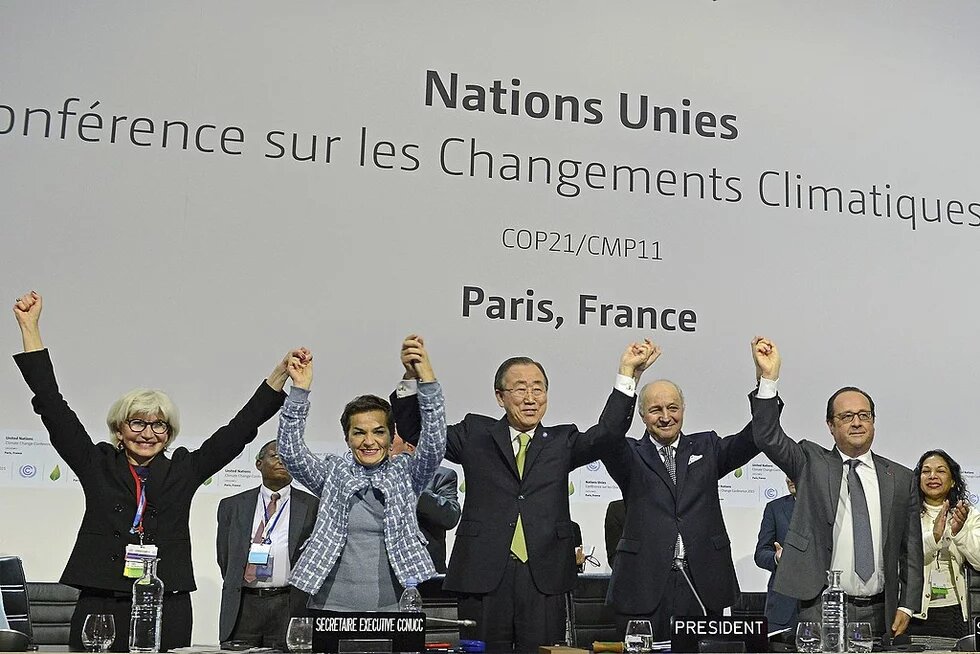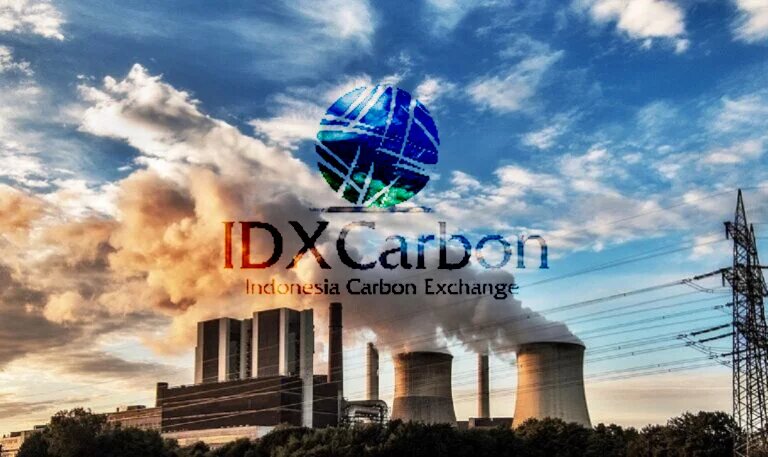
On 26th September 2023, Indonesia launched the ambitious Indonesia Carbon Exchange (IDX Carbon) as part of its commitment to the Paris Agreement in 2016—reducing carbon emissions and achieving zero-net emissions by 2060. Despite being a pivotal tool to address the climate crisis brought about by carbon emissions, critics contend that while carbon trading may provide incentives, it could also create loopholes in each country’s laws that may undermine net-zero carbon emissions.
This article highlights the perceived pitfalls of this "initiative," which is believed to accelerate carbon emission reduction. Instead, it is seen as just another attempt to distort and divert the goal of achieving net-zero emissions for Indonesia and other ASEAN countries with similar approaches

Carbon emissions, primarily in the form of carbon dioxide (CO2), are a major contributor to global warming. Burning fossil fuels for electricity, heat, and transportation is the largest single source of global greenhouse gas emissions. These gases trap heat in the Earth's atmosphere, causing temperatures to rise and leading to various climate change impacts such as rising sea levels, changing precipitation patterns, and an increased frequency of extreme weather events like hurricanes, droughts, and heavy rainfall.
The Paris Agreement is a legally binding international treaty on climate change. It was adopted by 196 Parties at the UN Climate Change Conference (COP21) in Paris, France, on 12th December 2015. It aims to limit global warming to below 2°C above pre-industrial levels, pursue efforts to limit the increase to 1.5°C, reduce greenhouse gas emissions, and strengthen resilience against climate change impacts. It was opened for signature on 22nd April 2016, at a ceremony inside the UN Headquarters in New York.
On 5th October 2016, the threshold for the entry into force of the Paris Agreement was achieved, exceeding the required minimum of 55 United Nations Framework Convention on Climate Change (UNFCCC) parties, accounting for 55% of global greenhouse gas emissions, thus making the agreement enter into force on 4th November 2016. As of February 2023, 195 members of the UNFCCC are parties to the agreement. Among the UNFCCC member states, Iran, Libya, and Yemen have not yet ratified the Agreement. The United States withdrew from the agreement in 2020 but rejoined in 2021.
Brunei, Singapore, and Thailand ratified the agreement on 21st September 2016, Indonesia on 31st October 2016, Malaysia on 16th November 2016, the Philippines on 23rd March 2017, Myanmar on 19th September 2017, while Vietnam approved the agreement on 3rd November 2016 but has not ratified it yet.
Since 2020, countries have been submitting their national climate action plans, known as Nationally Determined Contributions (NDCs). Each successive NDC is meant to reflect an increasingly higher degree of ambition compared to the previous version.
Indonesia set the enhanced Nationally Determined Contribution (NDC) in September 2022 to reach a reduction of 31.89% to 43.20% by 2030 and targets to reach net zero-emissions in the year 2060. With Presidential Regulation 98 of 2021 on “Carbon Economic Value” in Achieving the NDC, it defined the mechanisms for achieving the NDC, which are mitigation action, adaptation, and "Carbon Economic Value." Thus, "Carbon Economic Value" will further be used as the basis for Carbon Trading, Performance-Based Payments, Carbon Levy / Tax, or other mechanisms.
Furthermore, in Indonesian National Law No. 7 of 2021, in clause 13 paragraph 8, it is defined that the carbon tax rate is set at a higher or equal to the carbon price in the carbon market per kilogram of carbon dioxide equivalent (CO2e) or equivalent unit, and in paragraph 9, in the event that the carbon price in the carbon market as intended in paragraph 8 is lower than IDR 30.00 (Thirty Rupiah) per kilogram of carbon dioxide equivalent (CO2e) or equivalent unit, the carbon tax rate is set at a minimum of IDR 30.00 (Thirty Rupiah) per kilogram of carbon dioxide equivalent (CO2e) or equivalent unit.
In accordance with that, the Ministry of Environment and Forestry set Regulation No. 21 of 2022 concerning the implementation of "Carbon Economic Value," which defines that "Carbon Trading" can be done domestically and/or internationally, through “Carbon Exchange” or “Direct Trading” and acknowledges both forms of market mechanisms, which are emission trading (allowance trading) and greenhouse gas (GHG) emission offset (credits trading).
We must highlight here that the implementation of the carbon tax stated in Indonesian National Law No. 7 of 2021 has already been postponed several times, and the current projection from the government's side is to be implemented in 2025, which means it is (again) up to the next government since in October 2024 a new President and Cabinet will be sworn in.
Without clarity on when the carbon tax will be implemented, the Indonesian Government approved the launch of Indonesia Carbon Exchange (IDXCarbon) on 26th September 2023, with four types of markets, namely auction markets, regular markets, negotiated markets, and marketplaces. A lot of aspects of trading (e.g., the subject and the object of trading) will vary depending on the types of markets on which trading takes place, facilitating the Voluntary Carbon Market (VCM) that allows entities to offset their greenhouse gas emissions by buying carbon credits from emission reduction projects and the Emission Trading System (ETS). Entities can trade allowances, allowing those that reduce emissions more than required to sell their excess allowances to others, thus providing economic incentives for reducing emissions.
So how is it compared to other major economies in ASEAN?
Singapore
Singapore implemented the first carbon pricing scheme in Southeast Asia on 1st January 2019. It was set at 5 SGD/ton-CO2e from 2019 to 2023, 25 SGD/ton-CO2e in 2024 and 2025, and 45 SGD/ton-CO2e in 2026 and 2027, with a projection of 50-80 SGD/ton-CO2e by 2030. There are two carbon exchanges, Climate Impact X (CIX) and AirCarbon Exchange (ACX), both operational and aiming to be a global exchange of carbon credits.
Constrained by land limitations and the dependence on energy imports, Singapore's involvement in carbon trading can help the country meet its climate goal, strengthen its reputation, and incentivize businesses to reduce their greenhouse gas emissions and adopt cleaner technologies. This can lead to innovation, job creation, and long-term economic growth.
Malaysia
No carbon tax has been enforced yet. The government launched a voluntary carbon market exchange named Bursa Carbon Exchange (BCX) in December 2022, claiming to be the world's first shariah-compliant carbon exchange.
Thailand
No carbon tax has been enforced yet. In September 2022, Thailand launched its first voluntary carbon credit exchange (FTIX).
Vietnam
No carbon tax has been enforced yet. However, CT Group, a multi-industry economic group in Vietnam, launched ASEAN Carbon Credit Exchange Joint Stock Company (CCTPA) on 29th September 2023, a voluntary carbon emissions exchange in an attempt to respond to international trade policies. The US is expected to levy the carbon tariff in 2024, and EU-CBAM will be enforced in 2026. As many Vietnamese enterprises are now exporting to the EU and the US, meeting all requirements of carbon reduction that large markets are imposing will play a decisive role in the race in the global supply chain.
Philippines, Myanmar, and Brunei
No carbon tax or carbon exchange is known.
It is interesting to see that, apart from some initial transactions, presently, there are no carbon exchanges in Indonesia, Malaysia, or Thailand that have any transactions, referring to published data on their respective websites. Meanwhile, Vietnam’s exchange has no data available to the public.
Let's go deeper into why the so-called “Carbon Exchange” will be just another pitfall for Indonesia to achieve net-zero emissions:
-
Carbon Tax is still not being legally enforced
Without the tax on carbon as the baseline "stick," there is no reason for any entity to reduce their carbon emissions. -
Carbon Tax should be made progressively higher based on emitted CO2e
Even when the carbon tax is enforced, why should entities "trade" carbon credits with prices higher than the carbon tax, when it is much easier to just pay the fine of IDR 30.00 (Thirty Rupiah) per Kg-CO2e as in National Law No. 7/2021? This is very low compared to Singapore, the only ASEAN country that has implemented a carbon tax. Singapore’s carbon tax in 2024 will be 25 SGD per Ton-CO2e, equivalent to IDR 294 per Kg-CO2e, which is almost 10 times the carbon tax in Indonesia. Carbon Tax should be made progressively higher based on excess levels of CO2e. An entity that emits 1000 Ton-CO2e should be taxed higher (e.g., 10 times the tax rate) than an entity that emits 100 Ton-CO2e. -
Carbon Tax should be increased annually
The current National Law No. 7/2021 sets a fixed price cap of IDR 30 per Kg-CO2e without any mention of a yearly increase rate. The law should state and enforce a tax increase rate of at least 10% or double the yearly inflation rate, whichever is higher. Why at least 10%? So that in 10 years, the carbon tax rate will at least double, thus enforcing all parties involved to invest in green technologies and reduce their emissions. -
Economic Behaviour
The mechanism of exchange is to meet supply and demand. The supply here is the reduction of CO2e. To gain profit through carbon exchange, it is natural economic behavior to limit the supply, thus achieving a higher price. Entities that could reduce their CO2e more, tend to slow it, to achieve higher income through exchange, thus slowing the emission reduction effort. Without some sort of penalty, it will distort the goal of net-zero emissions. -
EU Carbon Border Adjustment Mechanism (CBAM)
In 2023, the EU entered the transitional phase of CBAM. It aims to fully enforce the regulation from 2026 onward. It ensures the carbon price of imports entering the EU is equivalent to the carbon price of EU domestic production, hence encouraging trading partners to reduce their emissions.
The price of CBAM certificates will be based on the average weekly price of EU-ETS (Emission Trading System) auctions. Valid for two years, the certificate cannot be traded or banked.
In relation to Indonesia and other ASEAN countries, exemptions could be made when carbon markets are linked to the EU-ETS or the carbon price is already paid in other jurisdictions. However, without a clear plan or timeline for ETS integration or compliance with international standards, it will certainly affect the trade balance of Indonesia/ASEAN with the EU.
Considering all these points, a question arises: can the Indonesia Carbon Exchange (IDXCarbon) and similar exchanges be categorized as “Initiatives Toward Decarbonization and Net Zero”? In the absence of a clear framework providing both incentives and penalties to reduce emissions, we must question if these initiatives are just distractions from the core issue.
Regardless of economic status or political view, the climate crisis is a reality affecting all of us. While we are debating mitigation and the effectiveness of current public policies, one thing persists: we cannot afford to ignore or just sweep under the rug the underlying issues. We must focus all our efforts on urgently reducing emissions as soon as possible to reach net-zero. This stands as the sole parameter.
__
Johnson Chandra is the Founder and Chair of Kophinesia, Green Co-Op Indonesia.
Disclaimer: This published work was prepared with the support of the Heinrich Böll Stiftung. The views and analysis contained in the work are those of the author and do not necessarily represent the views of the foundation. The author is responsible for any liability claims against copyright breaches of graphics, photograph, images, audio, and text used.

